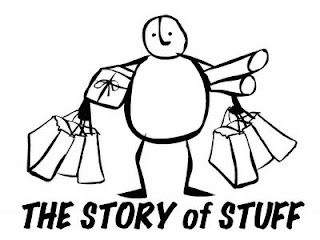 Something that's long known to exist in all kinds of affectionate relationships, science is finally opening itself to this area of research:
Something that's long known to exist in all kinds of affectionate relationships, science is finally opening itself to this area of research:from NPR (May 21, 2009):
The Love Study
On a bright spring day, Schlitz is leading Teena and J.D. Miller down a path to the laboratory at the Institute of Noetic Sciences, north of San Francisco. Schlitz is the president of the institute, which conducts research on consciousness and spirituality. The Millers have been married a decade and their affection is palpable — making them perfect for the so-called Love Study.
Schlitz takes Teena into an isolated room, where no sound can come in or go out. Teena settles into a deep armchair as Schlitz attaches electrodes to her right hand.
"This is measuring blood flow in your thumb, and this is your skin conductance activity," the researcher explains. "So basically both of these are measures of your unconscious nervous system."
Schlitz locks Teena into the electromagnetically shielded chamber, then ushers J.D. into another isolated room with a closed-circuit television. She explains that the screen will go on and off. And at random intervals, Teena's image will appear on the screen for 10 seconds.
"And so during the times when you see her," she instructs, "it's your opportunity to think about sending loving, compassionate intention."
As the session begins, Dean Radin, a senior scientist here, watches as a computer shows changes in J.D.'s blood pressure and perspiration. When J.D. sees the image of his wife, the steady lines suddenly jump and become ragged. The question is: Will Teena's nervous system follow suit?
"Notice how here … see, there's a change in the blood volume," says Radin, pointing to a screen charting Teena's measurements. "A sudden change like that is sometimes associated with an orienting response. If you suddenly hear somebody whispering in your ear, and there's nobody around, you have this sense of what? What was that? That's more or less what we're seeing in the physiology."
An hour later, Radin displays Teena's graph, which shows a flat line during the times her husband was not staring at her image, but when her husband began to stare at her, she stopped relaxing and became "aroused" within about two seconds.
After running 36 couples through this test, the researchers found that when one person focused his thoughts on his partner, the partner's blood flow and perspiration dramatically changed within two seconds. The odds of this happening by chance were 1 in 11,000. Three dozen double blind, randomized studies by such institutions as the University of Washington and the University of Edinburgh have reported similar results.
The 'Quantum Entanglement' Of Love
So how do you explain this? No one really knows. But Radin and a few others think that a theory known as "quantum entanglement" may offer some clues.
Here's how it works. Once two particles have interacted, if you separate them, even by miles, they behave as if they're still connected. So far, this has only been demonstrated on the subatomic level.
But Radin wonders: Could people in close relationships — couples, siblings, parent and child — also be "entangled"? Not just emotionally, and psychologically — but also physically?
"If it is true that entanglement actually persists, by means of which we don't understand," he says, "if they are physically entangled, you should be able to separate them, poke one, and see the other one flinch."
This idea — that we may be connected at some molecular level — echoes the words of mystics down the ages. And it appeals to some scientists.
But it infuriates others — like Columbia University's Sloan. The underlying idea is wrong, he says. Entanglement just doesn't work this way.
"Physicists are very clear that the relationship is purely correlational and not causal," Sloan says. "There is nothing causal about quantum entanglement. It's good to be open-minded, but not so open-minded that your brains fall out."
Radin and others agree that that's what science says right now. But they say these findings eventually have to be explained somehow.





























